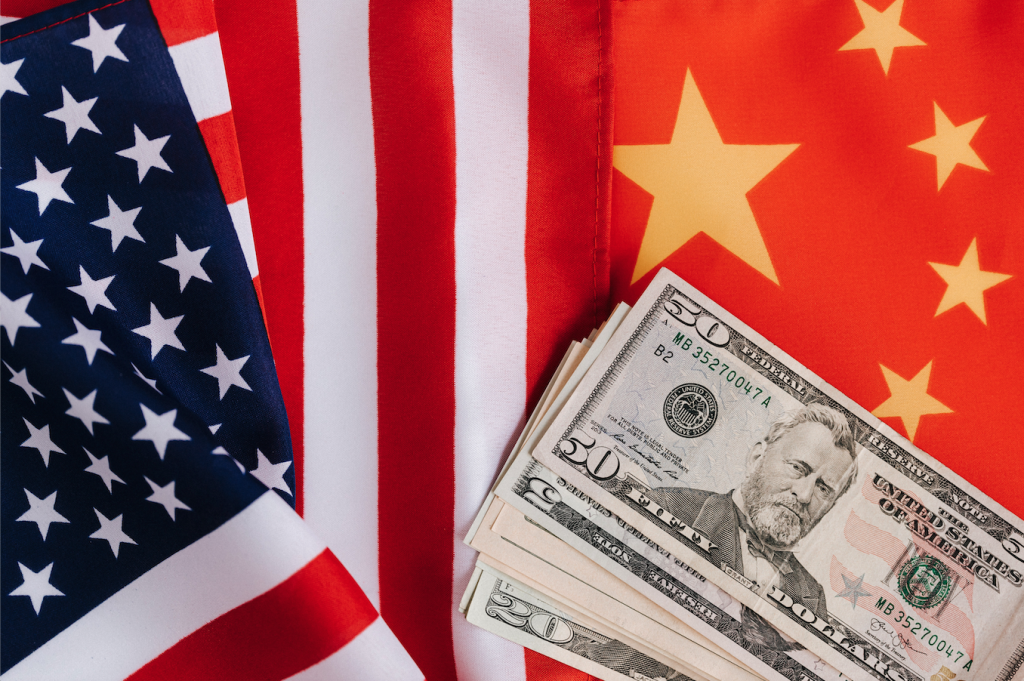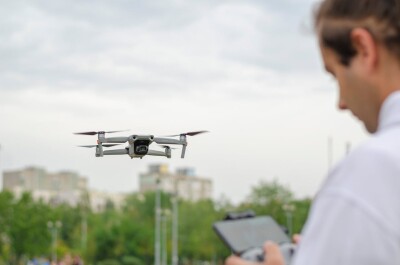The United States and China are in a trade war, and one of the newest casualties of that war is DJI. There has been a perpetual back and forth over DJI for a while now, with things heating up in 2019 and 2020. For most of 2020, the talk had been about the proposed National Defense Authorization Act (NDAA), and the finalization of the so-called Blue sUAS by the Department of Defense that identified drones that were cleared for federal use. But much of the concern seemed to have evaporated overnight when the House turned down the NDAA initiative. It seemed like DJI was given a stay of execution. So, when the news came out about DJI’s placement on the Department of Commerce’s Bureau of Industry and Security Entity List, it came as quite the surprise to everyone in the industry—despite the trends in 2020 toward greater platform diversity as a result of federal and congressional actions, both real and anticipated.
The document does not mince words about why, however. DJI, among several other companies were added to the list for:
“Activities contrary to U.S. foreign policy interests. Specifically, these four entities have enabled wide-scale human rights abuses within China through abusive genetic collection and analysis or high-technology surveillance, and/or facilitated the export of items by China that aid repressive regimes around the world, contrary to U.S. foreign policy interests.”
These claims go beyond the main concern that has been the talk of the industry for some time now—security—and suggests socio-political and cultural issues involving human rights. This adds another layer to the issue that revolves around ethics and to what extent DJI has been involved in any of these claims, which could have lasting effects on their brand.
Before diving into the potential repercussions of just being on the list entails. It is good to take a step back and ask: What does it actually mean for DJI to be on the Entity List? What are the sanctions?
First and foremost, being on the entity list doesn’t stop anyone from owning, buying, or using a DJI drone, but it does stop DJI from sourcing its components from U.S. companies. The language from the BIS site is as follows:
“The Export Administration Regulations (EAR) contain a list of names of certain foreign persons – including businesses, research institutions, government and private organizations, individuals, and other types of legal persons – that are subject to specific license requirements for the export, reexport and/or transfer (in-country) of specified items. These persons comprise the Entity List, which is found in Supplement No. 4 to Part 744 of the EAR. On an individual basis, the persons on the Entity List are subject to licensing requirements and policies supplemental to those found elsewhere in the EAR.”
The goal of cutting DJI off from U.S. goods to provide pressure on China, seems a bit of a slap on the wrist since DJI has been moving its production to China for quite some time, including seeking alternatives to their reliance upon FLIR cameras.
“Overall, the impact of this is not going to be as large as we think,” stated David Benowitz, Head of Research at DroneAnalyst, told Commercial UAV News. “DJI has been moving their supply chain to China for a long time. Literally, the same week, this happened, they just announced the release of the Mavic 2 Enterprise Advanced, which got rid of the FLIR component, meaning there are no more U.S. made thermal sensors in DJI products. I think that it's canny timing, to say the least. This will mean less for the company than it ever did.”
Although much of their production has moved offshore already, there is uncertainty about where their processors will be sourced, since most high-end processors come from U.S.-based companies like Intel or Nvidia and what that will do to the quality of their product.
“The restriction could affect DJI being able to have access to small, capable US-made processing chips, which could possibly reduce platform capabilities and upgrade cycles,” stated Mike Blades, Vice President of Aerospace, Defense, and Security Americas Region at Frost & Sullivan, to Commercial UAV News. “This could do much more to sway end-users, especially if a competitor can get close to DJI drone capabilities for a similar, even if a little more costly, solution.”
And Spencer Gore, founder of the US start-up Impossible Aerospace, suggested in the Financial Times:
“This move most likely makes many DJI products impossible to build today without a major redesign.”
Whether this is true or not, supply chain will be a topic of discussion and concern for the industry as any shortages may eventually impact downstream production like it did with the smartphone producer Huawei, which is predicting a 74% drop in expected shipments in 2021 compared to its projection for 2020.
If “specific license requirements for the export, reexport, and/or transfer (in-country) of specified items” seems like vague legalese, it is because it is. The terminology of “export and reexport” seems to be more-or-less clear, but what does “transfer (in-country)” actually mean? According to Dawn Zoldi in a recent article in Inside Unmanned Systems:
“Transfer means a shipment, transmission, or release (visual or other inspection, or written exchanges) of items subject to the EAR either within the U.S. or outside the U.S. (15 CFR § 722.1 Transfer and § 734.15 Release) This essentially precludes point-to-point end user exchanges—again, without a license (15 CFR § 734.16). In other words, deals involving U.S. products for DJI consumption cannot be done within the U.S. or elsewhere (did I say without a license?)”
This language seems to provide ample wiggle room for the BIS to make decisions on a case-by-case basis and to interpret the wording as it fits the case. What this essentially boils down to is that anyone looking to do business with or to continue to distribute to DJI should hedge their bets and go through the licensing process. How difficult this process is and whether or not it is worth it, is another thing the industry is going to have to figure out. But the language used in the list—“presumption of denial, except on a case-by-case review for items necessary to detect, identify and treat infectious disease”—does not bode well.
For DJI, just being on this list and reading what is outlined in it may prove more deadly than the sanctions themselves—the implication of human rights violations could have a potent effect on whether or not companies will want to do business with DJI at all.
“I think it will be hard to convince a commercial company with years of operating experience in the U.S. or even Europe that they want to do business with, or buy drones from, a company that is deemed an enemy of the United States,” explained Benowitz. “I think that is going to be DJI’s biggest hurdle.”
Companies like Skydio and Auterion, immediately jumped on some of these issues. Skydio focused heavily on the ethical issues the Entity List brought up, while Auterion focused on the added challenges and potential legal risk of using DJI drones.
“Based apparently on DJI’s support for abhorrent human rights violations, today’s addition of DJI to the entity list sends an unmistakable message: DJI does not share our values and cannot be trusted,” Brendan Groves, Head of Regulatory and Policy Affairs at Skydio, told sUAS News. “DJI had already acknowledged its obligation to share sensitive information collected in the U.S. and around the world with the Chinese Communist Party–a serious security risk. Now we learn that DJI has profited for years by supporting the suppression of the Uighurs in Xinjiang province–the world’s most egregious example of human rights abuses. Today’s news also sends an unmistakable signal to the marketplace: companies should think twice about doing business with a known violator of human rights.”
“With DJI being added to the US Commerce Department ‘Entity list’ the whole industry is changing fundamentally: This move does not only bar DJI from being able to continue to source critical U.S. components, it also means that any enterprise wanting to do business with DJI (even just using the DJI SDK) has to now review whether that activity is in compliance with U.S. regulations. Every transaction becomes a legal risk,” stated a blog post on Auterion’s website. “This makes any enterprise adoption of DJI products as risky as using Huawei hardware, the Chinese company, which has been on the same list for several years now and has been all but removed from U.S. enterprise usage.”
Although Auterion and Skydio are some of DJI’s biggest competitors in the U.S. market, these points are nevertheless valid. The added risk, red tape, and ethical implications could lead members of the industry to seek alternative resources that are less complicated, opening the way for other drone manufacturers with less stigma to gain traction. Benowitz pointed out that this is not necessarily a bad thing.
“When it comes down to it, DJI has no vision for the industry. They haven’t marketed one, they haven’t shown one. They want to sell you products that are priced cheaper than anywhere else on the market,” stated Benowitz. “They have very good features, but there’s no vision for where the future is—there is no idea for how businesses working on their platform can actually make money from it. We need more competition on the platform level, and we haven’t had that. I’m generally against country of origin bans and against rising security concerns when you don’t have any guidelines for companies to follow—that’s negative for the industry. But at the same time, it is also negative for the industry to have this level of dominance by a player who doesn’t really understand their power and responsibility in the market. We haven’t really seen them birth an ecosystem. This may be a painful lesson on DJI’s trajectory to being the next big tech behemoth, or it may be a footnote to the rise of another American company.”
Although there is a contingency who will make this switch, Blades pointed out that there is also a segment of drone operators who will continue to rely upon DJI for their everyday operations.
“If you talk to the end users, they’re concerned about cost,” explained Blades. “They have to make sure they are able to offer services without spending a bunch of money on expensive drones and the logistics that go into maintaining them. DJI has what commercial end users need in order to keep costs down and to realize return on investment. If drones get much more expensive, then you are at the point of asking if it is cheaper to just do the job in person. Until we can see another company that can achieve those economies of scale, it is not going to be a huge hit on DJI.”
Although there are a number of contenders in the market, the challenge will be to scale and provide the same level of ROI that enabled DJI to take control over a large chunk of the industry, ideally without sourcing Chinese parts. For many, it may come down to this consideration when making that ultimate decision to go with DJI or not.
With all of this coming at the tail-end of the current administration’s term, it begs the question whether the new administration will continue with the trade war with China or if there may be a return to the policies of four years ago. The answer to that, according to NPR, The New York Times, and other news sources, is that it is unlikely—at least not anytime soon. The war may be fought differently, but it will most likely continue until concessions are made. This leaves DJI in the middle, and the U.S. drone industry figuring out what they want to do to move forward.
















Comments